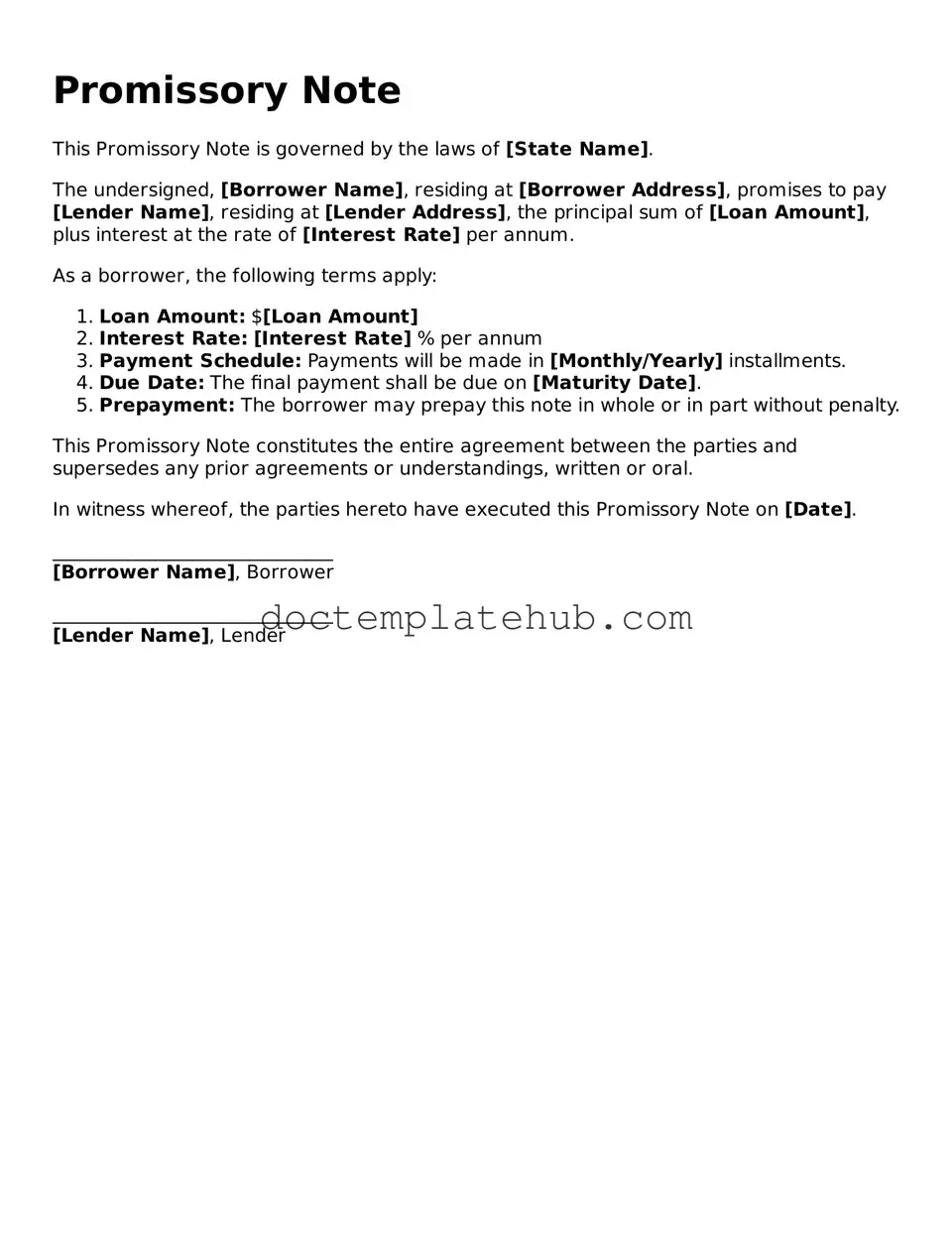What is a Promissory Note?
A promissory note is a written promise to pay a specified amount of money to a designated person or entity at a certain time or on demand. It serves as a legal document that outlines the terms of a loan or credit agreement, making it clear to both parties what is expected.
Who uses a Promissory Note?
Individuals, businesses, and financial institutions commonly use promissory notes. They can be used in various situations, such as personal loans between friends or family, business loans, or real estate transactions. Essentially, anyone who lends or borrows money may find a promissory note useful.
What are the key components of a Promissory Note?
A promissory note typically includes the following components: the names of the borrower and lender, the principal amount, the interest rate, the repayment schedule, and any collateral securing the loan. Additionally, it may specify the consequences of default and any applicable fees.
Is a Promissory Note legally binding?
Yes, a promissory note is legally binding as long as it meets certain criteria. It must include the essential elements of a contract, such as mutual consent, consideration, and a lawful purpose. When properly executed, it can be enforced in a court of law.
Do I need a lawyer to create a Promissory Note?
While it is not strictly necessary to hire a lawyer to create a promissory note, it can be beneficial. A lawyer can help ensure that the document is legally sound and tailored to your specific needs. This may prevent future disputes or misunderstandings.
Can a Promissory Note be modified?
Yes, a promissory note can be modified, but both parties must agree to the changes. It is advisable to document any modifications in writing and have both parties sign the revised agreement to maintain clarity and enforceability.
What happens if the borrower defaults on a Promissory Note?
If the borrower defaults, the lender has several options. They may pursue legal action to recover the owed amount, which could include filing a lawsuit. If the note is secured by collateral, the lender may also have the right to seize the collateral to satisfy the debt.
Can a Promissory Note be transferred to another person?
Yes, a promissory note can typically be transferred to another person or entity. This process is known as endorsement. However, the original borrower should be aware of the transfer, as it may affect the terms of repayment or the relationship with the new lender.
What is the difference between a Promissory Note and a Loan Agreement?
A promissory note is a simpler document that focuses primarily on the promise to repay the loan, while a loan agreement is more detailed. A loan agreement usually includes terms and conditions, covenants, and additional provisions regarding the loan. In essence, a promissory note is often part of a loan agreement.
Are there any tax implications related to a Promissory Note?
Yes, there can be tax implications associated with promissory notes. For instance, interest income received by the lender may be subject to taxation. Borrowers should also be aware of potential deductions related to interest payments. Consulting a tax professional is advisable to understand the specific tax consequences.
